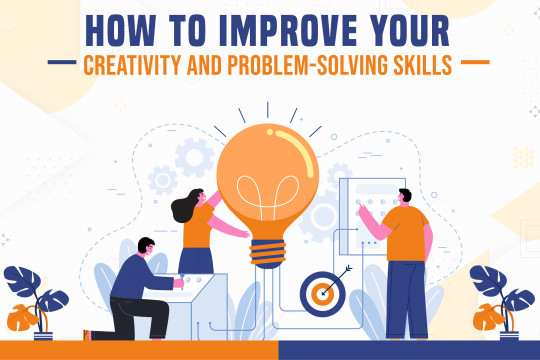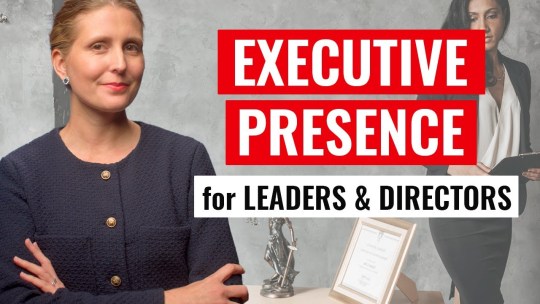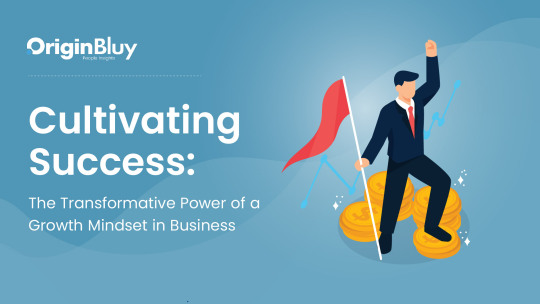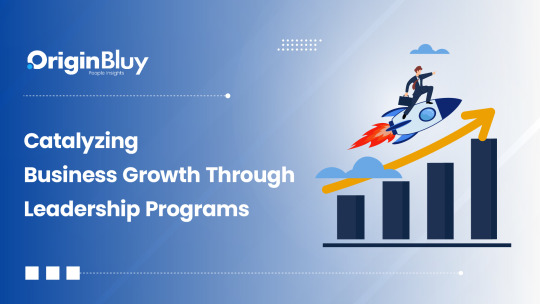Text
The 7 C's of Effective Communication for Successful Leadership
Effective communication is a cornerstone of successful leadership. The "7 C's of Effective Communication" provide a practical framework to help leaders ensure their messages are understood and acted upon correctly. Here’s a detailed look at each of these crucial components:

1. Clarity
Being clear means using precise and straightforward language. A leader should articulate their messages with enough context and specificity so there is no room for confusion or misinterpretation. This involves choosing the right words and constructing sentences that are simple and direct.
2. Conciseness
A concise message is free of unnecessary words or details. Effective leaders know how to communicate their point succinctly, which not only saves time but also keeps the attention of the audience. This doesn't mean important details are omitted, but rather that the communication is optimized to be as brief as possible while still complete.
3. Concreteness
Concrete communication means being specific, definite, and vivid rather than vague and general. Using concrete facts and data helps solidify and clarify points, making the communication more real and relatable. This helps to ensure that the message has the intended impact and persuasiveness.
4. Correctness
Correctness in communication implies that the message is free from errors, including grammatical mistakes and technical inaccuracies. It also means that the information is true and appropriate to the situation. This builds credibility and trust, which are essential for effective leadership.
5. Coherence
A coherent message is logical and consistent, where all parts of the communication are relevant and aligned with the topic. The flow of words, sentences, and ideas should be smooth, making it easy for the audience to follow along and understand the message fully.
6. Completeness
A complete message includes all the necessary information the audience needs to understand and potentially act upon it. This involves answering any questions that could arise about the topic and prompting the audience towards the desired response. Completeness helps prevent misunderstandings and ensures that the communication is effective.
7. Courtesy
In communication, courtesy involves being aware of and respectful to the audience. This includes using polite language, showing respect for the recipients' feelings and viewpoints, and considering their desires and potential feedback. Courteous communication fosters goodwill and can significantly enhance the effectiveness of the message.
Applying the 7 C's
To apply these 7 C's, leaders should regularly review their communication practices and seek feedback from their teams. Practicing these principles in every aspect of communication—from daily emails and team meetings to formal presentations and social media posts—can greatly improve a leader's effectiveness and enhance their ability to achieve organizational goals.
Adhering to these 7 C's not only improves the clarity and impact of a leader's communication but also boosts their ability to inspire, motivate, and lead their teams successfully. These principles are fundamental in building a strong foundation for leadership and ensuring that all forms of communication contribute positively to achieving business objectives.
0 notes
Text
How a Creative Problem-Solving Program Can Transform Your Business
In today's rapidly changing business environment, the ability to solve complex problems creatively is more crucial than ever. Companies that cultivate these skills can navigate challenges more effectively and discover opportunities that drive substantial growth. A Creative Problem-Solving Program is specifically designed to equip teams with the tools and techniques needed to think outside the box and develop innovative solutions. This blog explores the benefits of such programs and how they can revolutionize the way your company approaches problems.

What is Creative Problem-Solving?
Creative problem-solving is a methodological approach that encourages unconventional thinking to generate new and unique solutions. Unlike traditional problem-solving techniques that follow a linear path, creative problem-solving involves lateral thinking that not only addresses the issue at hand but also redefines the problems themselves, often leading to groundbreaking innovations.
The Core Elements of a Creative Problem-Solving Program
Divergent Thinking: Participants are trained to think in an expansive, non-linear manner which encourages the generation of multiple ideas and solutions.
Convergent Thinking: This component focuses on refining and narrowing down ideas into practical, executable solutions.
Idea Affirmation: Emphasizing a positive approach to idea generation, where no idea is too outlandish and every possibility is explored.
Benefits of Implementing a Creative Problem-Solving Program
Enhanced Innovation: Equip your team with the skills to think creatively and approach problems with fresh, innovative perspectives.
Improved Team Collaboration: Creative problem-solving exercises encourage teamwork and can improve interpersonal relations and communication.
Increased Adaptability: By fostering a mindset that adapts and thrives on challenges, your team can pivot quickly in a fast-changing market.
Sustained Competitive Advantage: Innovation leads to unique solutions that can offer a competitive edge in the marketplace.
Implementing a Creative Problem-Solving Program in Your Organization
Tailored Workshops: Integrate customized workshops that address specific areas within your company where innovation is needed.
Regular Training Sessions: Regular sessions help maintain a creative mindset and ensure continuous improvement.
Real-World Problem-Solving Scenarios: Apply training to real-world scenarios to reinforce learning and demonstrate practical application.
How to Choose the Right Creative Problem-Solving Program
Selecting the right program involves understanding your organization's specific needs and challenges. Look for programs that offer:
Customizable modules
Experienced facilitators
Proven methodologies
Positive testimonials and case studies

Conclusion
Investing in a Creative Problem-Solving Program is not just about enhancing the skills of your team; it's about transforming your organizational culture to one that embraces innovation and creativity at all levels. Such a program prepares your workforce to handle future challenges more adeptly and keep your business ahead of the curve.
0 notes
Text
CXO Coaching for Impactful Leadership Development
CXO Coaching is a specialized form of executive coaching tailored for top-level executives looking to enhance their leadership skills, strategic thinking, and organizational impact. This targeted coaching addresses the unique challenges faced by C-suite leaders, offering personalized guidance and development strategies to improve decision-making, leadership effectiveness, and executive presence. By focusing on personal and professional growth, CXO Coaching empowers leaders to drive their organizations toward sustained success.

#CXO Coaching#CXO Coaching Strategies#CXO Coaching Programs#CXO Coaching Training#CXO Coaching Development#CXO Coaching Workshops
0 notes
Text
Executive Presence: Path to Commanding Leadership
In the dynamic world of business leadership, Executive Presence is the key differentiator that can elevate a competent manager to an inspiring leader. This intangible blend of confidence, competence, and charisma enables leaders to command respect and influence outcomes effectively. This blog delves into the essence of Executive Presence and explores various strategies, coaching methods, training programs, and workshops designed to cultivate this crucial leadership quality.

Understanding Executive Presence
Executive Presence is not merely about how one dresses or speaks; it's about how one behaves and communicates in various business situations. It combines elements of emotional intelligence, communication skills, and an authentic leadership style that resonates with both subordinates and peers. Understanding and developing your Executive Presence can significantly impact your ability to lead and influence within your organization.
Executive Presence Strategies
To develop a strong Executive Presence, leaders need to employ specific strategies that enhance their visibility and impact. These include practicing clear and compelling communication, maintaining poise under pressure, and demonstrating genuine interest in the well-being and success of their teams. Strategic self-promotion, in a manner that highlights one's contributions without seeming boastful, is also crucial.
Executive Presence Coaching
Individual coaching sessions provide a tailored approach to developing Executive Presence. Experienced coaches work one-on-one with leaders to identify areas of strength and improvement, offering personalized feedback and actionable advice. Coaching helps leaders understand how they are perceived and how to align their self-presentation with their leadership goals.
Executive Presence Training
Structured training programs are essential for leaders looking to enhance their Executive Presence systematically. These programs often cover topics such as body language, speech delivery, and effective listening, and provide leaders with the tools they need to command attention and respect in any business setting.
Executive Presence Programs
Comprehensive Executive Presence programs offer a blend of training, coaching, and practical exercises designed to cultivate various aspects of commanding leadership. These programs are typically spread over several months and include assessments, workshops, and real-world assignments to reinforce learning.
Executive Presence Workshops
Workshops provide interactive opportunities for leaders to practice their Executive Presence skills in a supportive environment. These sessions often involve role-playing exercises, peer feedback, and expert facilitation to help leaders refine their ability to influence and inspire.
Executive Presence in Digital and Virtual Settings
In today’s increasingly digital workplace, Executive Presence must also translate across virtual platforms. Training and strategies that adapt Executive Presence for video conferences, online presentations, and digital communications are essential for modern leaders.
Conclusion
Executive Presence is a critical asset for any leader aiming to rise to the top and stay there. It’s about cultivating an aura of leadership that commands respect and fosters an environment of trust and motivation. Whether through personalized coaching, structured training, or interactive workshops, investing in your Executive Presence is an investment in your career's success. Ready to embark on your journey to commanding leadership? Explore our range of Executive Presence programs and workshops designed to elevate your leadership style. Click here to learn more and enroll today to transform your potential into powerful leadership reality.
#Executive Presence#Executive Presence Strategies#Executive Presence Coaching#Executive Presence Training#Executive Presence Programs#Executive Presence Workshops
0 notes
Text

Eid Al-Fitr Mubarak✨
Wishing you and your loved ones a blessed Eid with joy, peace, and prosperity.
This occasion brings peace, happiness, and prosperity to your life and to your loved ones.
Originbluy
0 notes
Text
From Manager to Leader: 15 Proven Leadership Development Strategies
In today's fast-paced business world, transitioning from a manager to a leader is crucial for career progression and organizational success. Leadership development is more than just acquiring new skills; it's about transforming your mindset and approach to inspire and guide your team towards achieving shared goals. This blog explores 15 proven strategies for leadership development, using insights from leadership development coaching, training programs, and workshops.

Understanding Leadership Development
Leadership development is the process of enhancing one's ability to lead teams, manage resources, and drive organizational goals. It involves a comprehensive approach, focusing on personal growth, strategic thinking, and emotional intelligence to navigate the complexities of modern business environments effectively.
Embracing Leadership Development Strategies
Self-assessment: Begin with a thorough assessment of your current leadership skills and identify areas for improvement. Tools like 360-degree feedback can provide valuable insights.
Set Clear Leadership Goals: Define what leadership success looks like for you and set specific, measurable goals to achieve it.
Engage in Leadership Development Coaching: Personalized coaching sessions can offer tailored advice, accountability, and support as you work on your leadership capabilities.
Participate in Leadership Development Training: Invest in training programs that focus on critical leadership skills such as decision-making, communication, and strategic planning.
Learn from Leadership Development Programs: Enroll in comprehensive programs that cover a wide range of leadership topics, offering a more holistic development approach.
Attend Leadership Development Workshops: Workshops provide practical, hands-on experience with leadership scenarios, enhancing your learning through active participation.
Cultivate Emotional Intelligence: Emotional intelligence is key to effective leadership. Focus on improving your self-awareness, empathy, and relationship management skills.
Expand Your Knowledge: Stay informed about the latest leadership theories, models, and best practices by reading books, articles, and attending seminars.
Build a Support Network: Connect with other leaders and mentors who can offer guidance, share experiences, and provide feedback on your leadership journey.
Practice Reflective Leadership: Regularly reflect on your leadership experiences, successes, and failures to glean lessons and continuously improve.
Encourage Feedback: Actively seek feedback from peers, superiors, and team members to gain diverse perspectives on your leadership style.
Lead by Example: Demonstrate the qualities you wish to see in your team. Integrity, commitment, and a positive attitude are contagious.
Foster a Culture of Learning: Promote an environment where continuous learning, curiosity, and innovation are valued and encouraged.
Delegate Effectively: Empower your team by delegating tasks that play to their strengths, fostering trust, and promoting team development.
Celebrate Successes: Recognize and celebrate the achievements of your team. Appreciation can significantly boost morale and motivation.
Conclusion
Transitioning from manager to leader is a journey of continuous learning and development. By employing these 15 proven leadership development strategies, you can enhance your leadership capabilities and make a meaningful impact on your team and organization. Whether through coaching, training, or workshops, the key is to remain committed to your growth and embrace the challenges along the way. Ready to take your leadership to the next level? Explore our Leadership Development Programs today and embark on your path to becoming an impactful leader. Click here to discover how we can support your leadership journey.
#Leadership Development Strategies#Leadership Development#Leadership Development Coaching#Leadership Development Programs#Leadership Development Journey
0 notes
Text
Leading with Vision: The Impact of CEO Coaching
Imagine standing at the peak of a mountain alone. The view is breathtaking, but the silence is overwhelming. This scenario mirrors the experience of many CEOs: at the top of their industries, yet isolated in their roles.

A staggering 60% of CEOs report feeling a sense of loneliness in their positions, with two-thirds of them admitting that this isolation negatively impacts their performance. This isolation isn't just a personal challenge; it represents a broader issue that can affect the entire organization's direction and success.
Enter the world of CEO coaching, a dynamic and personalized approach designed to address the unique challenges faced by those at the helm of today’s businesses. CEO coaching goes beyond traditional mentorship; it's a partnership that fosters growth, provides strategic insights, and breaks through isolation by offering a confidential sounding board for the most complex decisions.
0 notes
Text
The Transformative Power of a Growth Mindset in Business
Imagine a workplace where challenges are welcomed, failures are seen as stepping stones to mastery, and the term "impossible" is merely a hurdle to be overcome. This isn't a fantasy—it's the reality for organizations that have embraced a growth mindset.

Recent studies reveal that businesses fostering this mindset not only see a 34% uplift in employee engagement but also experience a staggering 47% increase in innovation. In today's competitive landscape, the ability to adapt and grow is not just an advantage; it's a necessity. But what exactly is a growth mindset, and how can it catalyze your company's success?
This blog post dives deep into the transformative power of a growth mindset in the business world, offering insights and actionable strategies to cultivate a culture of continuous learning and resilience.
#Growth Mindset#Growth Mindset Training#Growth Mindset Coaching#Growth Mindset Workshops#Growth Mindset Programs
0 notes
Text
Catalyzing Business Growth Through Leadership Programs
Effective leadership can propel companies to a 21% increase in profitability, as a result, the quest for impactful leaders is more critical than ever. Yet, the path to cultivating these pivotal figures is fraught with challenges: rapid market changes, skill gaps, and scarce training resources stand as formidable barriers.

Leadership programs offer advantages that extend beyond the individual participant, impacting the entire organization and its bottom line. These benefits are a testament to the transformative power of focused leadership development.
#Leadership Programs#Leadership Coaching#Leadership development#Leadership Training#Leadership workshops
0 notes
Text
5 Executive Coaching Tips To Transform Consulting Leadership
In the fast-paced world of consulting, leadership can be the linchpin that determines the success or failure of both projects and firms. Executive coaching offers a powerful tool to enhance leadership qualities, but its application must be strategic and insightful. Here are five executive coaching tips designed to transform consulting leadership, driving success and fostering a culture of excellence.

1. Cultivate Emotional Intelligence (EI)
Emotional intelligence is crucial in consulting, where understanding client needs and managing team dynamics are part of daily operations. Executive coaching should focus on enhancing leaders' self-awareness, empathy, and interpersonal skills. By developing EI, leaders can create stronger connections with clients and teams, leading to improved outcomes and satisfaction.
2. Enhance Strategic Thinking
Consulting leaders thrive on their ability to anticipate market shifts and navigate complex problems. Executive coaching should encourage leaders to step back from daily operations and focus on long-term strategic planning. Techniques like scenario planning and SWOT analysis can be valuable tools in developing a strategic mindset.
3. Foster a Culture of Continuous Learning
The consulting industry is continually evolving, with new methodologies, technologies, and best practices emerging regularly. Leaders must cultivate an environment where continuous learning is valued and encouraged. Executive coaching can introduce leaders to frameworks for personal and organizational learning, ensuring they remain at the forefront of industry developments.
4. Strengthen Decision-Making Abilities
In consulting, decisions often need to be made quickly and with incomplete information. Executive coaching should aim to enhance leaders' decision-making processes, incorporating elements of critical thinking, risk assessment, and ethical considerations. Developing a structured approach to decision-making can lead to more confident and effective leadership.
5. Promote Effective Communication
Clear, concise communication is essential in consulting, where complex ideas must be conveyed to clients and teams. Executive coaching can help leaders refine their communication skills, focusing on clarity, persuasion, and active listening. Effective communication not only improves project execution but also builds trust and credibility with clients and colleagues.
Conclusion
Transforming leadership within the consulting sector requires a focused approach that addresses the unique challenges and opportunities of the industry. By incorporating these five executive coaching tips, consulting leaders can enhance their effectiveness, inspire their teams, and deliver exceptional value to clients. The journey towards leadership excellence is ongoing, but with the right strategies and support, the potential for growth and impact is limitless.
#executive coaching#executive coaching india#executive coaching dubai#Executive Coaching training#executive coaching programs#executive coaching delhi
0 notes
Text
#leadershipdevelopment#leadershipcoaching#leadershipdevelopmenttraining#growthcoaching#businesssuccesstraining#leadershipdevelopmentprograms
0 notes
Text
Benefits Of Executive Coaching That Might Surprise You

Executive coaching has gained significant traction in recent years as a powerful tool for leadership development and organizational growth. While many are familiar with its potential to enhance individual performance and effectiveness, there are several lesser-known benefits that might surprise you. we'll explore ten surprising advantages of executive coaching that go beyond the traditional notions of leadership development.
1. Enhanced Decision-Making Skills
One surprising benefit of executive coaching is its impact on decision-making skills. Through targeted coaching sessions, leaders gain valuable insights into their decision-making processes, identify blind spots, and develop strategies for making more informed and effective decisions in complex situations.
2. Increased Emotional Intelligence
Executive coaching goes beyond technical skills to focus on emotional intelligence (EI) development. Coaches help leaders enhance their self-awareness, self-regulation, empathy, and social skills, leading to stronger relationships, improved communication, and better conflict resolution abilities.
3. Greater Resilience and Adaptability
Executive coaching helps leaders build resilience and adaptability in the face of adversity and change. By fostering a growth mindset and providing support during challenging times, coaches empower leaders to navigate uncertainty with confidence and resilience.
4. Improved Work-Life Balance
Surprisingly, executive coaching can also contribute to improved work-life balance for leaders. Coaches help individuals identify priorities, set boundaries, and manage their time more effectively, leading to reduced stress and greater overall satisfaction both at work and in personal life.
5. Enhanced Creativity and Innovation
Executive coaching encourages leaders to think outside the box and embrace creativity in problem-solving. Coaches provide a safe space for brainstorming new ideas, challenging assumptions, and exploring innovative approaches to business challenges.
6. Better Conflict Resolution Skills
One unexpected benefit of executive coaching is its impact on conflict resolution skills. Coaches help leaders develop strategies for managing conflict constructively, fostering open dialogue, and finding mutually beneficial solutions to workplace disputes.
7. Increased Employee Engagement and Retention
Executive coaching can have a positive ripple effect throughout the organization by increasing employee engagement and retention. When leaders are more effective communicators, listeners, and motivators, they create a more supportive and inclusive work environment that fosters loyalty and commitment among team members.
8. Enhanced Networking and Relationship Building
Executive coaching can also facilitate networking and relationship-building opportunities for leaders. Coaches help individuals expand their professional networks, strengthen existing relationships, and leverage connections to advance their careers and achieve their goals.
9. Improved Health and Well-being
Surprisingly, executive coaching can contribute to improved health and well-being for leaders. By addressing stress, burnout, and work-related health issues, coaches help individuals adopt healthier lifestyle habits and prioritize self-care, leading to greater overall well-being and longevity.
10. Positive Organizational Culture Transformation
Finally, executive coaching can lead to a positive transformation in organizational culture. When leaders embody the values of authenticity, integrity, and accountability promoted by coaching, they set a powerful example for their teams and contribute to a culture of trust, transparency, and continuous improvement.
Conclusion: Unleashing the Full Potential of Executive Coaching
In conclusion, executive coaching offers a multitude of surprising benefits that extend far beyond traditional notions of leadership development. From enhancing decision-making skills and emotional intelligence to fostering resilience, creativity, and employee engagement, executive coaching has the power to transform individuals, teams, and entire organizations. By harnessing the full potential of executive coaching, businesses can cultivate a culture of excellence, innovation, and sustainable growth in today's competitive landscape.
#executivecoaching#executivepresence#leadershipcoaching#executivecoachingprograms#executivecoachingtraining#talentdevelopment
0 notes
Text
Unlocking Talent Productivity with AI for Talent

In the competitive landscape of today’s workforce, finding and retaining top talent while maximizing productivity remains a paramount challenge for organizations worldwide. This case study delves into how one company revolutionized its talent management approach through the integration of AI technologies, leading to unprecedented levels of productivity and employee engageme
Background
The subject of our case study, a global tech company facing high turnover rates and stagnating productivity levels, recognized the need for a more innovative approach to talent management. Traditional methods were no longer sufficient in meeting the dynamic demands of the modern workplace.
Challenge
The company struggled with several key issues:
Inefficient talent acquisition processes leading to prolonged vacancy periods.
Lack of personalized development plans resulting in underutilized employee potential.
Inadequate data analysis capabilities for predicting talent trends and needs.
AI-Driven Talent Management Solution
Implementation of AI Tools
The company embarked on a transformative journey by adopting AI tools designed to optimize various aspects of talent management, including recruitment, onboarding, performance management, and employee retention.
Key Features and Applications
AI in Recruitment: Advanced algorithms were used to streamline the recruitment process, from resume screening to candidate matching, significantly reducing the time to hire.
Personalized Learning and Development: AI-powered platforms provided personalized learning recommendations for employees, aligning their growth with company goals.
Predictive Analytics: The use of AI for predictive analytics helped in identifying potential employee turnover and talent gaps, allowing for proactive talent planning.
Results
The implementation of AI in talent management led to remarkable outcomes:
Reduced Time to Hire: The recruitment cycle was shortened by 40%, enabling quicker filling of critical roles.
Increased Employee Productivity: Personalized development plans resulted in a 25% increase in employee productivity within six months.
Enhanced Talent Retention: Predictive insights allowed for targeted retention strategies, reducing turnover rates by 30%.
Lessons Learned
The success of AI in transforming the company’s talent management practices highlighted several key lessons:
The importance of aligning AI tools with strategic talent management objectives.
The need for ongoing training and support to maximize the adoption and effectiveness of AI technologies.
The value of leveraging AI insights for continuous improvement in talent management strategies.
Conclusion
The case study of this global tech company showcases the profound impact AI can have on unlocking talent productivity. By embracing AI for talent, organizations can not only enhance their talent management processes but also create a more dynamic, engaged, and productive workforce. This case underscores the potential of AI as a pivotal tool in the future of work, driving innovation, efficiency, and success in talent management.
#aifortalent#humanresources#talenthr#talentacquisition#hiring#hiringchallenges#hrconsulting#hrhiring#success#growthmindset#topperformer
0 notes
Text
Mentoring and Coaching: Building the Next Generation of Leaders

In today's rapidly changing world, organizations need a steady stream of competent and capable leaders to ensure their future success. This is where mentoring and coaching come into play, providing invaluable tools for cultivating the next generation of leaders within your organization.
What is the difference?
While often used interchangeably, mentoring and coaching are distinct approaches to leadership development:
Mentoring: Typically involves a more experienced individual (mentor) sharing their knowledge, experience, and guidance with a less experienced individual (mentee). Mentors provide advice and support based on their own career journeys, fostering a long-term, relational connection.
Coaching: Focuses on helping individuals (coachees) unlock their own potential and develop specific skills and behaviors needed for leadership success. Coaches use structured conversations, questioning techniques, and feedback loops to empower coachees to set goals, identify solutions, and take action.
Building the Next Generation:
Combining mentoring and coaching offers a powerful combination for developing future leaders:
Mentors provide role models and champions, offering guidance and inspiration through their own experiences and network connections. This helps shape leadership values and behaviors.
Coaches equip future leaders with the skills and knowledge necessary to navigate complex challenges, make effective decisions, and lead teams successfully. Coaching focuses on developing emotional intelligence, communication skills, and problem-solving abilities.
Benefits of Combined Approach:
Accelerated Development: Provides a comprehensive approach to leadership development, fostering both personal growth and skill development.
Enhanced Self-awareness: Mentors and coaches help individuals identify their strengths and weaknesses, enabling them to maximize their potential and become more effective leaders.
Improved Retention: Investing in leadership development programs with mentorship and coaching can help attract and retain top talent, showcasing your commitment to their growth and success.
Succession Planning: Equips organizations to build a pipeline of future leaders who are prepared to take on key roles and ensure organizational continuity.
Implementing an Effective Program:
Clearly Define Goals: Establish specific goals and objectives for your leadership development program, ensuring alignment with your organization's overall strategy.
Match individuals with the right mentors and coaches: Consider compatibility, expertise, and leadership styles when pairing mentors and coaches with individuals.
Provide ongoing support and resources: Offer training for mentors and coaches, facilitate regular meetings, and provide access to additional resources like leadership development workshops or online learning modules.
Measure and track progress: Regularly evaluate the effectiveness of your program by collecting feedback from participants, tracking progress towards goals, and adjusting the program as needed.
By investing in both mentoring and coaching, you can cultivate a leadership pipeline filled with individuals equipped with the knowledge, skills, and behaviors required to lead your organization towards a successful future.
#Mentoring and Coaching#Mentoring and Coaching programs#Mentoring and Coaching training#Mentoring and Coaching for corporates
0 notes
Text
How to Build Confidence: 10 Tips for Being More Confident

Confidence is the cornerstone of success in both personal and professional realms. It's the fuel that propels you forward, enabling you to tackle challenges, seize opportunities, and navigate life with resilience and grace. However, building confidence is a journey that requires self-awareness, practice, and dedication. In this comprehensive guide, we'll explore ten actionable tips to help you cultivate and nurture unwavering confidence in every aspect of your life.
1. Embrace Self-Acceptance
True confidence begins with self-acceptance. Embrace your strengths, weaknesses, quirks, and imperfections. Understand that nobody is perfect, and that's what makes you unique. By accepting yourself wholly, you lay the foundation for genuine confidence to blossom.
2. Set Realistic Goals
Goal-setting is a powerful tool for building confidence. Set specific, achievable goals that push you out of your comfort zone without overwhelming you. As you accomplish these goals, you'll experience a sense of fulfillment and empowerment, fueling your confidence to aim even higher.
3. Practice Self-Compassion
Be kind to yourself, especially in moments of failure or setback. Instead of dwelling on mistakes, view them as opportunities for growth and learning. Cultivate a compassionate inner dialogue that uplifts and encourages you, nurturing a strong sense of self-worth and confidence.
4. Cultivate a Growth Mindset
Adopt a growth mindset, believing in your ability to improve and develop over time. Embrace challenges as opportunities for growth, rather than obstacles to be avoided. By cultivating a mindset focused on learning and progress, you'll bolster your confidence in your capacity to overcome any hurdle.
5. Step Out of Your Comfort Zone
True growth and confidence lie beyond the confines of your comfort zone. Challenge yourself to try new things, take calculated risks, and embrace uncertainty. Each time you step outside of familiar territory and succeed, your confidence will soar, expanding the boundaries of what you believe you can achieve.
6. Practice Assertiveness
Assertiveness is a key trait of confident individuals. Learn to express your thoughts, feelings, and needs openly and respectfully. Set clear boundaries and stand up for yourself when necessary. By asserting yourself in a constructive manner, you'll earn the respect of others and bolster your confidence in your ability to navigate interpersonal dynamics effectively.
7. Focus on Personal Growth
Invest in your personal growth and development consistently. Whether it's through formal education, skill-building workshops, or self-directed learning, prioritize activities that enrich your knowledge and capabilities. As you expand your skill set and knowledge base, your confidence will naturally grow, empowering you to take on new challenges with gusto.
8. Practice Positive Visualization
Visualize success and embody confidence in your thoughts and actions. Picture yourself accomplishing your goals with ease and poise. By consistently visualizing positive outcomes, you'll rewire your subconscious mind to align with your aspirations, bolstering your confidence and motivation to turn your dreams into reality.
9. Celebrate Your Achievements
Acknowledge and celebrate your achievements, no matter how small they may seem. Take pride in your accomplishments and recognize the hard work and dedication that went into achieving them. Celebrating your successes reinforces a positive self-image and boosts your confidence, motivating you to continue striving for excellence.
10. Surround Yourself with Supportive People
Surround yourself with individuals who uplift and inspire you. Cultivate a supportive network of friends, mentors, and peers who believe in your abilities and encourage your growth. Their positivity and encouragement will bolster your confidence, providing a strong foundation of support as you pursue your goals.
Conclusion
Building confidence is a transformative journey that requires patience, self-reflection, and consistent effort. By incorporating these ten tips into your daily life, you'll cultivate a deep sense of self-assurance that empowers you to thrive in every endeavor. Remember, confidence is not about being perfect; it's about embracing your strengths, learning from your setbacks, and believing in your capacity to achieve greatness. So, embark on this journey with courage and conviction, knowing that true confidence resides within you, waiting to be unleashed upon the world.
0 notes